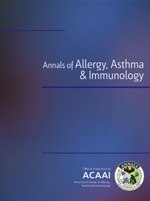Microsoft word - allegato d
LICEO STATALE "B. Croce" - Via Cavalieri di Vittorio Veneto, 9 67051 Avezzano (Aq) Tel 0863412264 Fax 0863410488 C.F. 81005130661 ALLEGATO D MODULO FORMULAZIONE OFFERTA ECONOMICA Allegato al bando di gara prot. 521 C/14 del 13/2/2014 Intestazione Ditta _________________________________________________________________ ____________________________________

 International consensus on hereditary and acquired angioedema
David M. Lang, MD Werner Aberer, MD y; Jonathan A. Bernstein, MD z; Hiok Hee Chng, MD x;Anete Sevciovic Grumach, MD, PhD jj; Michihiro Hide, MD, PhD {; Marcus Maurer, MD Richard Weber, MD and Bruce Zuraw, MD yy
* Allergy/Immunology, Respiratory Institute, Cleveland Clinic, Cleveland, Ohioy Department of Dermatology, Medical University of Graz, Graz, Austriaz Department of Internal Medicine, Division of Immunology/Allergy, University of Cincinnati, Cincinnati, Ohiox Department of Rheumatology, Allergy, and Immunology Tan Tock Seng Hospital, Singaporejj Faculty of Medicine ABC, São Paulo, Brazil{ Department of Dermatology, Institute of Biomedical and Health Sciences, Hiroshima University, Hiroshima, Japan# Department of Dermatology and Allergy, Allergie-Centrum-Charité, Charité e Universitätsmedizin Berlin, Germany** Department of Medicine, Division of Allergy/Immunology, National Jewish Health, Denver, Coloradoyy Department of Medicine, Division of Rheumatology, Allergy, and Immunology, University of San Diego, San Diego, California
Article history:Received for publication October 8, 2012.
International consensus on hereditary and acquired angioedema
David M. Lang, MD Werner Aberer, MD y; Jonathan A. Bernstein, MD z; Hiok Hee Chng, MD x;Anete Sevciovic Grumach, MD, PhD jj; Michihiro Hide, MD, PhD {; Marcus Maurer, MD Richard Weber, MD and Bruce Zuraw, MD yy
* Allergy/Immunology, Respiratory Institute, Cleveland Clinic, Cleveland, Ohioy Department of Dermatology, Medical University of Graz, Graz, Austriaz Department of Internal Medicine, Division of Immunology/Allergy, University of Cincinnati, Cincinnati, Ohiox Department of Rheumatology, Allergy, and Immunology Tan Tock Seng Hospital, Singaporejj Faculty of Medicine ABC, São Paulo, Brazil{ Department of Dermatology, Institute of Biomedical and Health Sciences, Hiroshima University, Hiroshima, Japan# Department of Dermatology and Allergy, Allergie-Centrum-Charité, Charité e Universitätsmedizin Berlin, Germany** Department of Medicine, Division of Allergy/Immunology, National Jewish Health, Denver, Coloradoyy Department of Medicine, Division of Rheumatology, Allergy, and Immunology, University of San Diego, San Diego, California
Article history:Received for publication October 8, 2012.